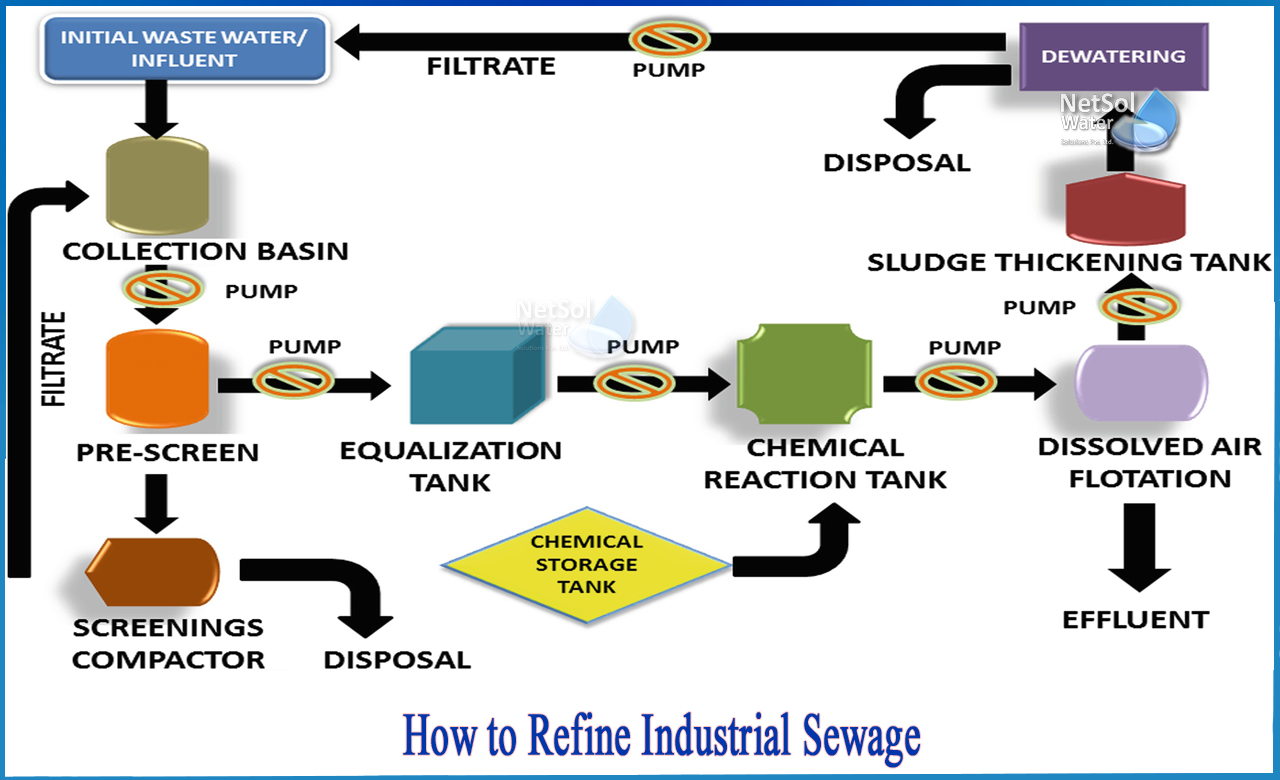Developments and Advances in Industrial Waste Water Therapy Technologies
The landscape of industrial wastewater treatment is undergoing a transformative shift, driven by developments that enhance both efficiency and sustainability. As regulatory standards develop, the integration of AI and machine knowing into wastewater management systems promises to make certain and enhance procedures compliance.
Summary of Waste Water Therapy Technologies
Wastewater therapy modern technologies include a variety of methods made to get rid of pollutants from industrial effluents prior to their launch into the environment. These modern technologies are important for preserving ecological equilibrium and making certain conformity with environmental policies. The primary groups of wastewater treatment consist of physical, chemical, and organic methods, each offering unique purposes based upon the nature of the pollutants existing.

Biological treatment techniques use bacteria to weaken raw material, making them particularly efficient for organic-rich effluents. Strategies like turned on sludge and biofilm activators harness the natural degradation capabilities of bacteria, causing considerable reductions in biochemical oxygen need (BODY)
Advanced Filtering Techniques
Advanced filtration strategies represent a vital development in the realm of commercial wastewater treatment, improving the effectiveness of pollutant removal processes. Industrial Waste Water Treatment. These methods encompass a series of technologies, including microfiltration, ultrafiltration, nanofiltration, and turn around osmosis, which give consecutive obstacles for different bit sizes and chemical structures
Microfiltration and ultrafiltration make use of membrane layer systems to eliminate suspended solids, bacteria, and bigger natural particles, enhancing the quality of effluent previous to more therapy. Nanofiltration bridges the void in between ultrafiltration and reverse osmosis, effectively removing organic substances and divalent ions, therefore minimizing the load on downstream procedures.
Reverse osmosis uses the highest degree of filtration by enabling only water and tiny molecules to pass through its semi-permeable membrane layers, making it suitable for recovering top quality water from commercial effluents. Recent advancements in membrane layer innovation, consisting of the advancement of more sturdy and fouling-resistant products, have dramatically enhanced functional effectiveness and reduced expenses.
Incorporating these sophisticated filtration methods not only improves the total treatment procedure but additionally contributes to sustainability initiatives by enabling water reuse and resource recuperation in industrial setups. (Industrial Waste Water Treatment)
Organic Treatment Technologies

Additionally, the development of crafted biological systems, such as membrane layer bioreactors (MBRs), combines organic treatment with innovative membrane purification. This combination permits greater effluent quality and lowered footprint, making it ideal for space-constrained industrial centers. Innovations in genetically crafted microorganisms have actually also emerged, boosting the biodegradation of particular impurities, such as pharmaceuticals and hefty metals, that are generally testing to eliminate.
In addition, the implementation of bioaugmentation methods, where advantageous germs are introduced to improve the existing organic treatment processes, has actually revealed promising outcomes in boosting treatment performance. These technologies collectively represent a fad in the direction of even more sustainable and effective biological therapy approaches that can adapt to the advancing intricacies of industrial wastewater streams. As markets continue to focus on environmental conformity, these biological advancements will certainly play a crucial function in wastewater monitoring.

Resource Recuperation Techniques
In industrial setups, the integration of source healing approaches has come to be progressively vital for boosting sustainability and reducing waste. These approaches focus on removing important products and energy from wastewater streams, consequently transforming prospective pollutants into multiple-use resources.
One famous approach is vitamins and mineral recovery, where nitrogen and phosphorus, commonly present in excess in wastewater, are recorded and converted right into plant foods. This not only minimizes environmental effects yet also offers a round economy service for farming applications. In addition, technologies such as anaerobic food digestion permit for the conversion of organic waste into biogas, a sustainable power resource that can offset fossil fuel usage in commercial procedures.
Additionally, advanced filtering and membrane layer technologies help with the healing of commercial byproducts such as salts and steels. These recovered materials can be click here now reintegrated into production processes, minimizing the demand for virgin sources.
Future Fads in Drainage Management
As industries increasingly prioritize sustainability, the future of wastewater administration is readied to go through considerable improvements. Technical innovations, such as expert system and artificial intelligence, will certainly make it possible for extra reliable surveillance and monitoring of wastewater systems. These modern technologies can forecast upkeep requirements, enhance treatment processes, and enhance decision-making, inevitably lowering functional expenses and environmental impact.
Moreover, the integration of round economic climate principles will play an important function in wastewater management. Industries are expected to change in the direction of systems that not only deal with wastewater yet likewise recuperate valuable sources, such as nutrients, water, and power. This transition will certainly decrease waste and promote the reuse of materials, straightening with worldwide sustainability goals.
Arising treatment techniques, such as membrane layer bioreactors and advanced oxidation processes, will certainly even more enhance the performance of wastewater therapy, enabling higher top quality effluents appropriate for reuse. Additionally, governing frameworks are most likely to progress, emphasizing more stringent requirements for wastewater discharge and motivating markets to take on ingenious therapy options.
Conclusion
In verdict, the evolution of commercial wastewater treatment modern technologies demonstrates a substantial shift in the direction of boosted effectiveness and sustainability. Innovations in sophisticated purification methods, organic treatments, and source recovery approaches highlight the industry's dedication to environmental stewardship. The combination of synthetic knowledge and artificial intelligence further enhances these procedures, ensuring regulative conformity and advertising a circular economic climate. Proceeded advancements in these areas will certainly play a crucial function fit the future of wastewater monitoring and safeguarding crucial water sources.
The landscape of commercial wastewater treatment is undergoing a transformative change, driven by technologies that boost both performance and sustainability.Wastewater therapy technologies encompass go to this web-site a range of methods developed to remove contaminants from industrial effluents before their release right into the setting.Harnessing the power of organic procedures has actually led anonymous to considerable advancements in the treatment of industrial wastewater.Additionally, the implementation of bioaugmentation strategies, where beneficial microbes are presented to improve the existing biological treatment procedures, has actually shown appealing results in boosting therapy performance. These developments collectively indicate a fad in the direction of even more reliable and lasting biological treatment techniques that can adjust to the developing complexities of commercial wastewater streams.
 Ralph Macchio Then & Now!
Ralph Macchio Then & Now! Earvin Johnson III Then & Now!
Earvin Johnson III Then & Now! Raquel Welch Then & Now!
Raquel Welch Then & Now! Atticus Shaffer Then & Now!
Atticus Shaffer Then & Now! Sarah Michelle Gellar Then & Now!
Sarah Michelle Gellar Then & Now!